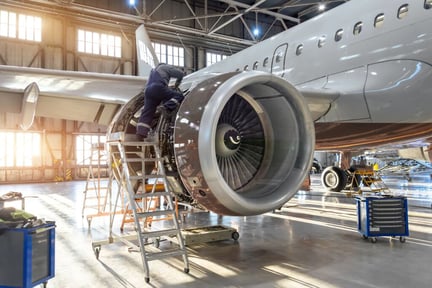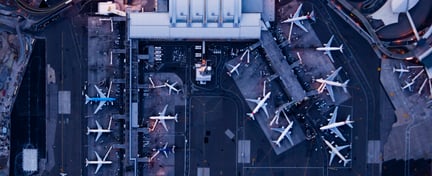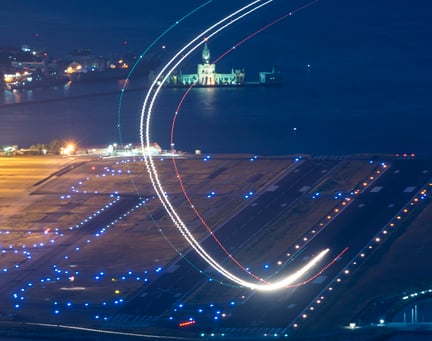Successful aerospace organizations are those that find intelligent ways to embed contractual requirements, including regulatory, quality and safety requirements, into their business processes.
Background
As we know, the suite of core AS 91XX standards is aimed at different operations within organizations. AS 9100’s requirements are targeted at designers and manufacturers, AS 9110’s requirements are focused on Maintenance, Repair and Overhaul (MRO) service providers, while AS 9120’s requirements are directed at stockists and distributors of products, systems and services.
Recent incidents and developments in the industry have resulted in increased scrutiny from regulators towards Original Equipment Manufacturers (OEMs) and throughout their supply chains. Even the latest proposed IAQG rules update to the associated AS 9101 and AS 9104 standards show a requirement for increased focus by auditors on any customer and regulatory-specific approvals and their requirements. These must be identified as part of the pre-audit information—known as On-site Customer Approval Process (OCAP) data—and should be reviewed in detail during an audit, such as at contract review, to ensure their requirements are being adhered to.
How aviation regulations impact AS 91XX-certified organizations
Regulatory requirements are non-negotiable and are imposed upon OEMS by government regulators such as the Federal Aviation Administration (FAA), European Union Aviation Safety Agency (EASA), Civil Aviation Authority (CAA) and others. OEMs are often obliged to contractually flow these regulatory requirements down their supply chains, to their Tier 1 and Tier 2 suppliers and even further. Examples of such regulations include:
- FAA Part 21, which covers product certification procedures and FAA Parts 23 and 25 address airworthiness standards
- EASA Part 21 involves aircraft and related parts certification
- The International Civil Aviation Organization (ICAO) annex 8 deals with airworthiness and annex 16 focuses on emissions
- The Radio Technical Commission for Aeronautics Document (RTCA DO) 178C outlines software safety standards
These regulations are often contractually flowed throughout the aviation supply chain to ensure that the quality and safety of processes, products and services are maintained, especially for flight-critical components and systems.
Recent examples of regulations not being fully implemented among suppliers include:
- Insufficient safety oversight of software development
- Lapses in compliance with FAA/EASA Part 21 safety standards applying to structural fasteners
- Weak inspection protocols that missed defectively supplied parts
These oversights have resulted in engine recalls, airframe reworks, unplanned software updates, lawsuits and airworthiness directives from regulators. Each of these issues not only incurs significant financial costs but also leads to operational disruptions and delays. In the case of engine recalls and airframe reworks, production lines are slowed or halted, deadlines missed and contractual penalties incurred. In the case of unplanned software updates, the integration of new systems gets delayed and requires additional resources for testing and validation, further escalating costs.
The financial burden from these oversights can be immense. Lawsuits can arise from affected parties which often lead to hefty settlements and legal fees, draining company resources. Airworthiness directives from regulators require immediate and costly compliance actions to rectify safety concerns, further straining budgets.
Not only do these issues lead to financial disruption but they also cause severe damage to brand reputation. In the world of aerospace, this can have longer-lasting impacts such as T1 or T2 customers seeking alternative suppliers and difficulty attracting new business due to negative supplier database feedback.
At the OEM and T1 level, the knock-on impact of poor awareness of regulatory standards on QMSs can really affect share prices. News of recalls, lawsuits and regulatory actions often leads to a decline in investor confidence, resulting in falling share prices. Market share can also be lost to competitors who are perceived as more reliable and better at managing regulatory impacts on quality assurance.
Responding to increasing scrutiny of regulations on the aviation supply chain
We can therefore see from the regulators and latest IAQG rules updates that AS 91XX-certified organisations need to respond effectively to the increasing scrutiny of regulations.
Here are some key steps they can take:
Understanding the increasing range and scope of aviation regulations: While safety and quality regulations are paramount, the range and scope of regulations have expanded to include areas such as cybersecurity, emissions, sustainability and responsible sourcing. Those involved in leading assurance management need to comprehend the scope, scale and impact of various regulations that have been contractually flowed and agreed upon by their organisation.
Awareness of the impact of misunderstanding contractual obligations: Organizations need to ensure they have understood how these regulatory requirements affect their safety management system (SMS), quality management system (QMS), business processes and the overall impact that non-compliance can have on their business and brand. They must also be aware of how quickly some regulations can evolve and have the capability to respond equally swiftly.
Pre-empting and responding to aviation regulatory changes: It is crucial for organizations to have the foresight to anticipate regulatory changes and adapt accordingly. This proactive approach can prevent compliance issues and help maintain the integrity of their operations.
How LRQA can help your organization prepare and respond
AS 91XX-certified organizations are expected to understand the nature and impact of regulations on their SMSs and QMSs and therefore implement stringent oversight and control. A misunderstanding or lack of awareness can not only lead to those issues described above but can be particularly damaging to long-term contracts and business relationships.
This is why LRQA aerospace auditors focus on how organizations have accepted, interpreted, understood and embedded these requirements into their Quality Management System (QMS) and business processes.
Our integrated approach to QMS, SMS and business management system audits means that we consider the impact of regulations, standards and contractual requirements early on within audits and assessments. We offer a suite of globally recognised aerospace standards combined with audit tools to design and deploy audit programmes that address regulatory and standards requirements on contracts and focus on the critical risks these introduce onto your business and supply chains.
Our solutions in assurance and product integrity help facilitate regulatory approvals and improve quality and safety across your operations, through a blend of:
Aerospace industry-specific standards and certification programmes involving compliance audits, supply chain oversight and business process assurance to meet industry and specific standards.
Regulatory and contractual obligations management to ensure compliance with aviation regulations and legislative frameworks.
By leveraging our industry expertise, your business can ensure that its safety and quality management systems are in full compliance with regulations and standards. By partnering with LRQA, the complexities that regulations now pose to supply chains, business processes and risk management as essential parts of safety and quality assurance, are fully understood and managed at the operational and strategic level, to remain compliant and competitive in a rapidly changing landscape.






